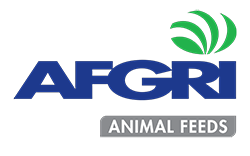Nutritional flushing of Sheep
In recent times the economic pressure that sheep farmers have experienced has been detrimental. To relieve the pressure that farmers experience, flush feeding could be used as a management tool to maximize the economic viability of their sheep enterprise. The proper nutrition during the breeding season is key.
Flush feeding
Flush feeding is a well-known term used to describe the purposeful elevation in the level of nutrition of a ewe just before breeding. The aim is to increase the ewe’s weight with the objective of ensuring that the number of ewes that come into oestrus is maximized as well as boosting ovulation, conception, and embryo survival. Increasing these rates increases the lambing percentage by 10% – 20% which in turn is a primary factor that influences a sheep enterprise’s profitability. Ovulation rate and live weight are correlated traits when it comes to sheep but only until a threshold is reached. Research shows that the lambing percentage increases with 1.5% and the ovulation rate by 2% for every kilogram that the ewes in the herd are heavier during mating until of course the threshold point has been reached. Ewes that gain weight during the breeding season are more prone to produce twins than ewes that maintain or lose weight.
Body Condition
The focus for success with flush feeding should shift towards reaching an optimal body condition (BC) before and during the breeding season. The optimal BC falls between 3 – 3.5 on a scoring system of 1 – 5. The effectiveness of flushing is much higher on thin ewes because of their quicker response in body condition. Ewes with above average body condition usually do not respond as well to flushing as thin ewes. Managing the ewes by sorting them into different groups according to body condition could help save a lot of money on feed costs as ewes with above average body condition will need less feed to reach the optimal body condition than thin ewes.
Flushing – When and How
The period of flushing before breeding depends greatly on the body condition of the current herd. A group of ewes with a BCS of more than 2.5 will need about 3 weeks of flushing before mating while thinner ewes will need a longer period. Flushing should continue for another 3-4 weeks into the breeding season. This is to ensure that early embryonic deaths are minimized. Research has shown that continuing flush feeding into the breeding season causes embryo implantation and attachment to the uterus to be more successful, this is due to the increased amounts of energy received through flush feeding. It is of great importance not to continue with flush feeding for too long as it is not economically viable to feed the ewe above her maintenance needs for the rest of her gestation period until a month before lambing. Feeding the ewe to her maintenance needs will be more than enough.
Diet and nutritional changes
During the flush feeding period ewes should be allocated the highest quality grazing to stimulate weight gain and allow ewes to reach their optimal body condition. Ewes need a higher dry matter intake and require an increase in energy which should be the focus point when it comes to the ewe’s diet. As important as increasing the energy in the diet is, it is just as important to have high quality bypass protein in the diet. The next important concept is to have enough feed bunk space to allow all animals to consume the correct intakes when supplementing additional feed. It is important to remember that not one farm or supplemented diet is the same and one should consult with your nutritionist so that the correct recommendations and advice regarding your setup can be given.
Flushing rams
Rams should be flush fed 2 months prior to the breeding season to increase sperm production and testes size. It takes 2 months for sperm to develop and mature. A bypass protein based flush feed is ideal to start rams on 2 months prior to mating. Rams play a critical role in ensuring a high lambing percentage and for that it is best to keep rams in an optimal body condition (3.5) so that their performance is maximized. Rams should not be allowed to get to thin or to fat. This has a definite negative impact on their performance and on the lambing percentage in the end
(By Andries Kruger, Technical Advisor, AFGRI Animal Feeds)

.png)

